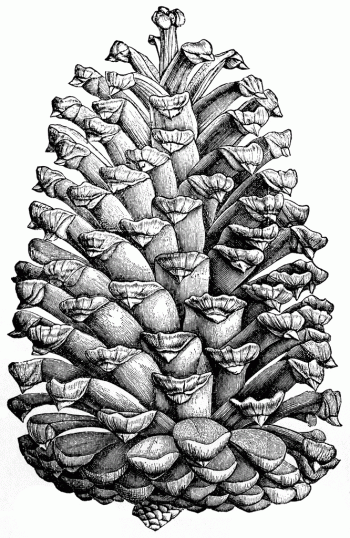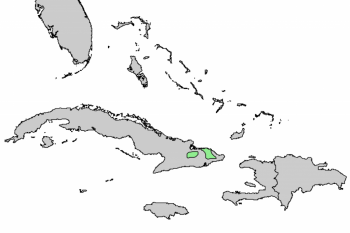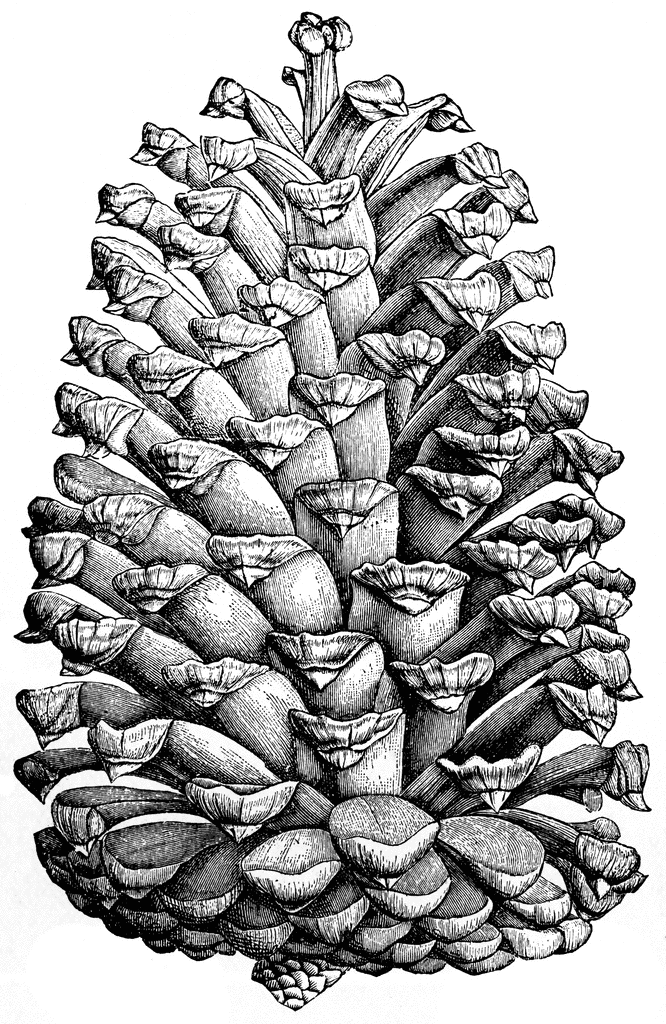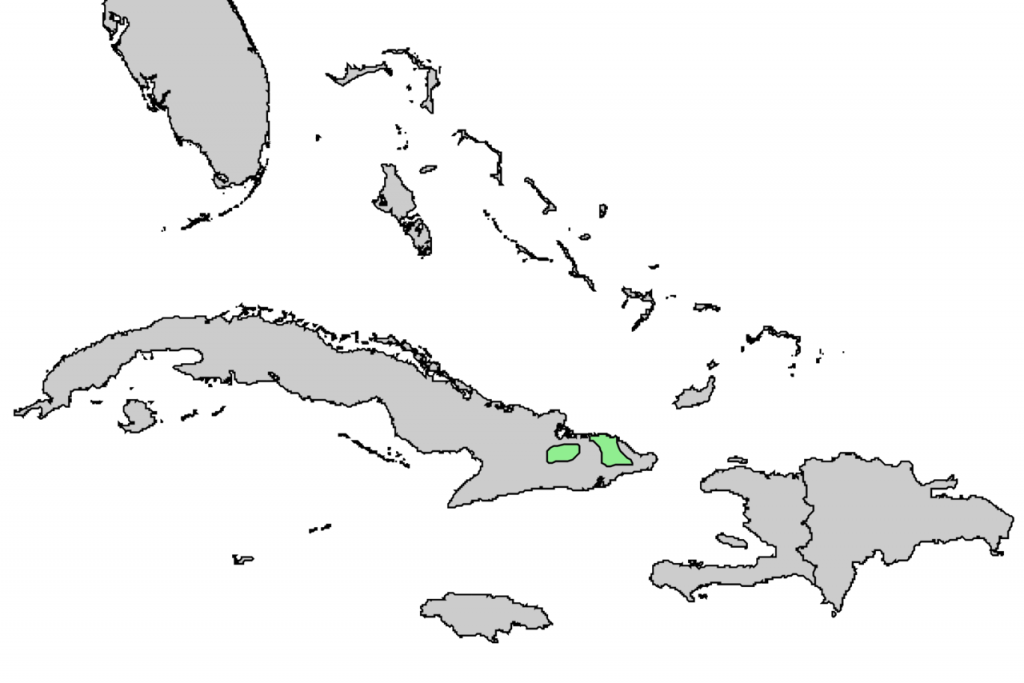subgenus Pinus, section Trifoliae (Duhamel), subsection Australes (Loudon).
Pinus cubensis, first described in 1862 by August Heinrich Rudolf Grisebach (1814-1879), is commonly known as Cuban pine as well as Pino de Mayarà in the Spanish language. The specific epithet refers to its native country.
Ethnobotany. This species has be greatly exploited for its lumber.
Description. Cuban pine is an evergreen coniferous species of tree that grows to mature heights of 100 to 120 feet (30 - 40 m) with a trunk up to 40 inches (1 m) in diameter, measured at breast height. The tree's crown is conical when young, becoming shallowly bowl-shaped and open with age.
- Bark is thick, grayish-brown in color, with thick, blocky ridges or small plates divided by deep furrows.
- Branches are slender, held horizontally, sparsely clothed with foliage. Twigs are hairless, colored reddish brown, but lightened by a waxy coating, becoming somewhat roughened with the bases of scale leaves.
- Foliar buds are 0.32 to 0.6 inch (8 - 15 mm) long. They are not resinous.
- Leaves (needles) are borne in bundles of 2 (sometimes 3), measuring 3.2 to 6 inches (8 - 15 cm) long. They are stiff and straight, retained for 2 to 3 years on the tree, and are dark green in color. Individual needles have numerous stomates on both the inner and outer faces and 3 to 6 resin canals touching the 2-stranded med-vein at the corners and inside of both faces. Needles sheaths measure 0.24 to 0.4 inch (6 - 10 mm) long, curling back with the needles push, but persisting for the life of the fascicle. They are shed with the needles.
- Pollen cones measure 0.6 to to 0.8 inch (15 - 20 mm) long, and are colored yellow.
- Seed cones measure 1.6 to 2.8 inches (4 - 7 cm) long, broadly obovoid shaped and are comprised of 50 to 90 scales. They are green when young, later ripening dark yellow-brown and held on 0.4 to 0.8 inch (1 - 2 cm) peduncles.
- Seed scales are paddle-shaped, the exposed face horizontally diamond-shaped, crossed by a ridge topped by a small, diamond-shaped umbo with a short, easily broken prickle.
- Seed body measures 0.2 to 0.28 inch (5 - 7 mm) long with a firmly attached wing, measuring 0.48 to 0.72 inch (12 - 19 mm).
Distribution. This species is native to eastern Cuba growing at altitudes of 1,200 to 2,800 feet (300 - 900 m) above sea level, in Guantanamo, Holguin and Santiago de Cuba provinces, as well as in parts of the historic Oriente province. It forms pure, open pine forests in the mountains and formerly down to the coast, especially on the difficult serpentine or other ferruginous soils (Nipe latosol or Nipe clay) that are so prominent in that part of the country; coastal stands on alluvium. Hardy to USDA Zone 9 - cold hardiness limit between 20° and 30°F (-6.6° and -1.1°C).




